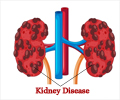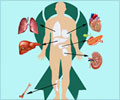A new study has suggested that kidney transplants that show a combination of fibrosis (scarring) and inflammation after one year are at higher risk of long-term transplant failure.

One-year biopsies showed no abnormalities in 57 percent of kidneys; another 30 percent had fibrosis (scarring) but no inflammation. In these two groups, the transplanted kidney continued to function normally from one to five years' follow-up.
However, in the remaining 13 percent of transplants, the biopsies showed fibrosis plus inflammation. These transplants had declining kidney function and a reduced long-term survival rate. Kidneys showing fibrosis plus inflammation also had increased numbers of immune cells as well as a "rejection-like" gene expression signature.
Thus, in apparently normal kidney transplants, biopsies showing fibrosis and inflammation signal kidney damage and an increased risk of long-term failure. "It is likely that the intragraft environment of patients with fibrosis and inflammation is damaging to the allograft," says Stegall.
Without routine "protocol" biopsies, these warning signs would go undetected until clinical abnormalities developed, comments Mark D. Stegall, MD (Mayo Clinic, Rochester, MN).
"The use of protocol biopsies allows for more detailed investigations of the intragraft environment," he says.
"Such routine biopsies could provide a unique way to predict which kidney transplant recipients may be at increased risk for loss of kidney function, or to identify potential targets for early preventative treatment."
The study appears in an upcoming issue of the Journal of the American Society of Nephrology (JASN).
Source-ANI














